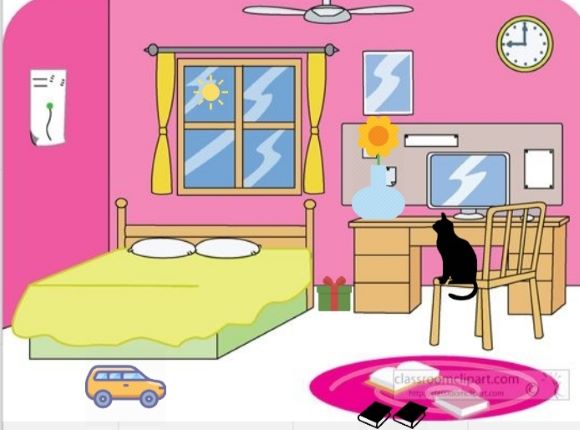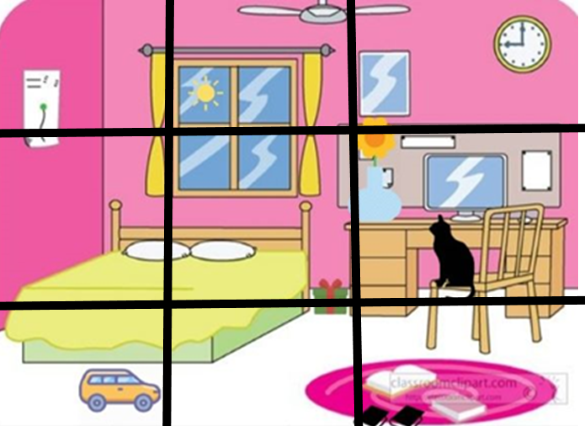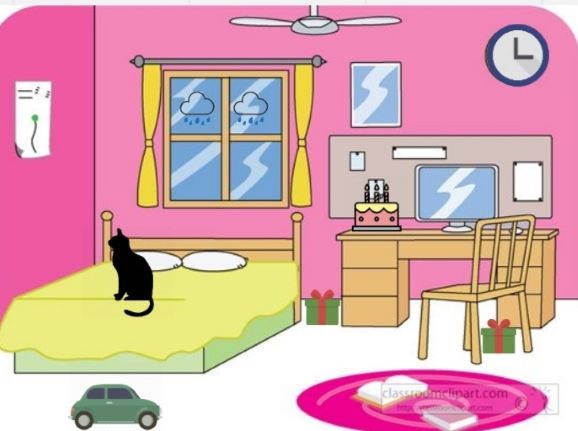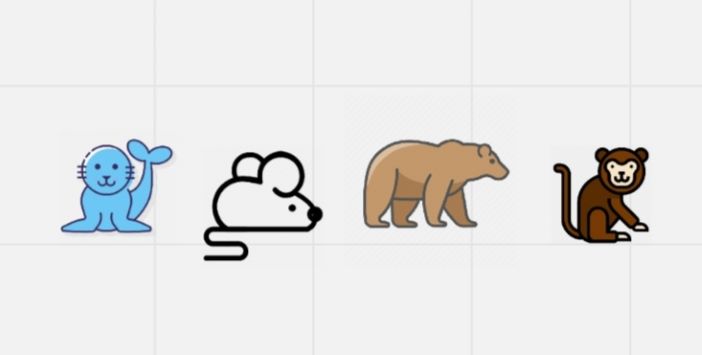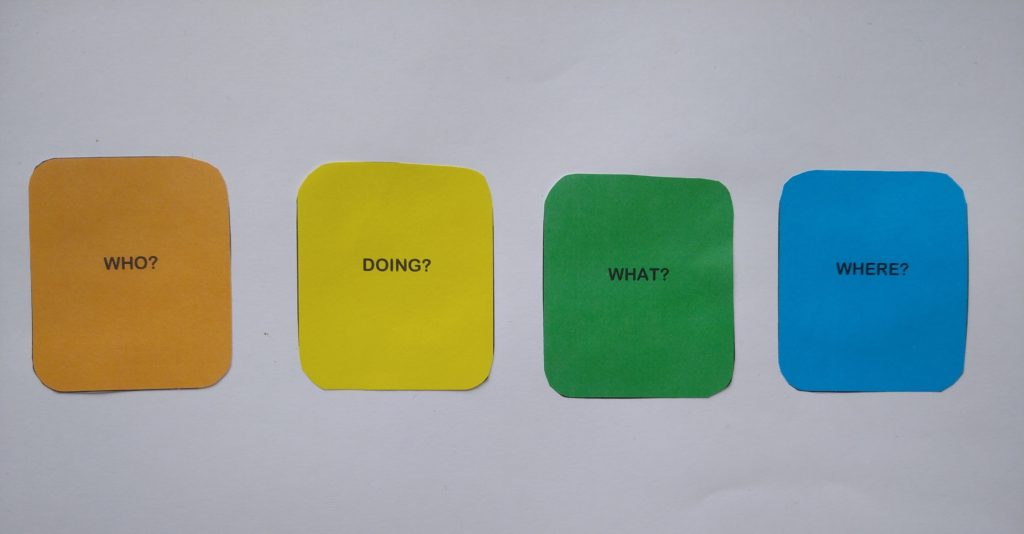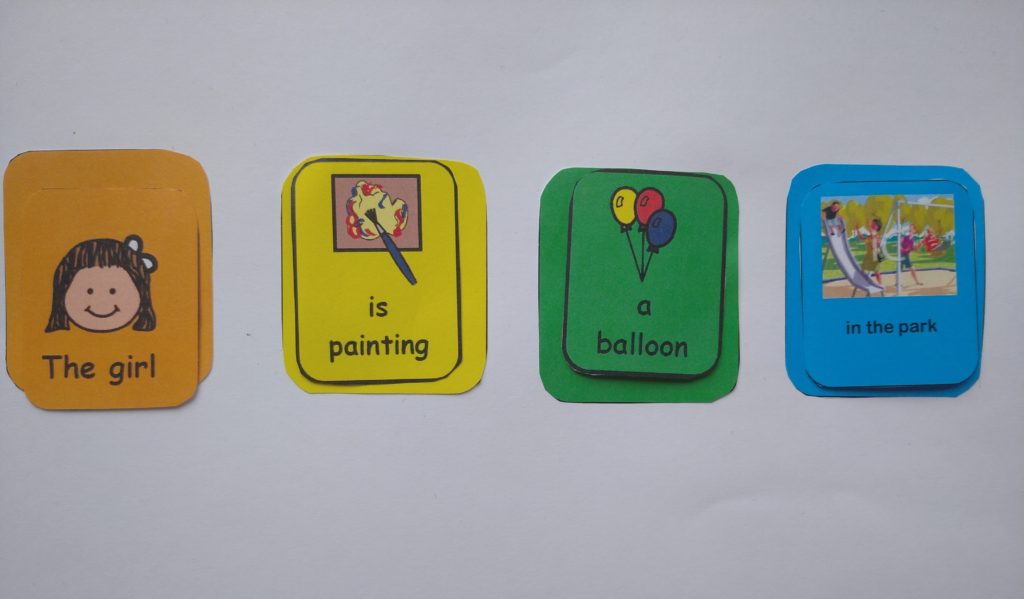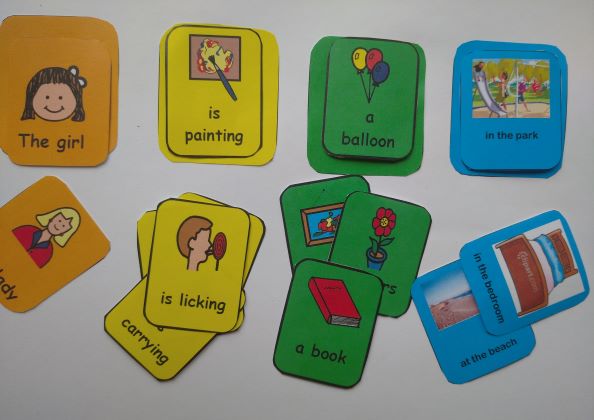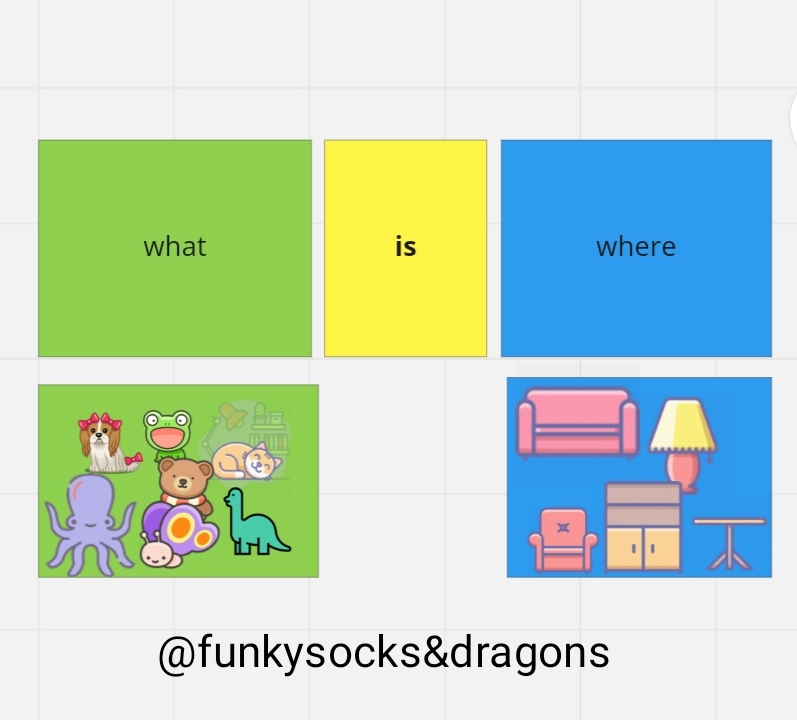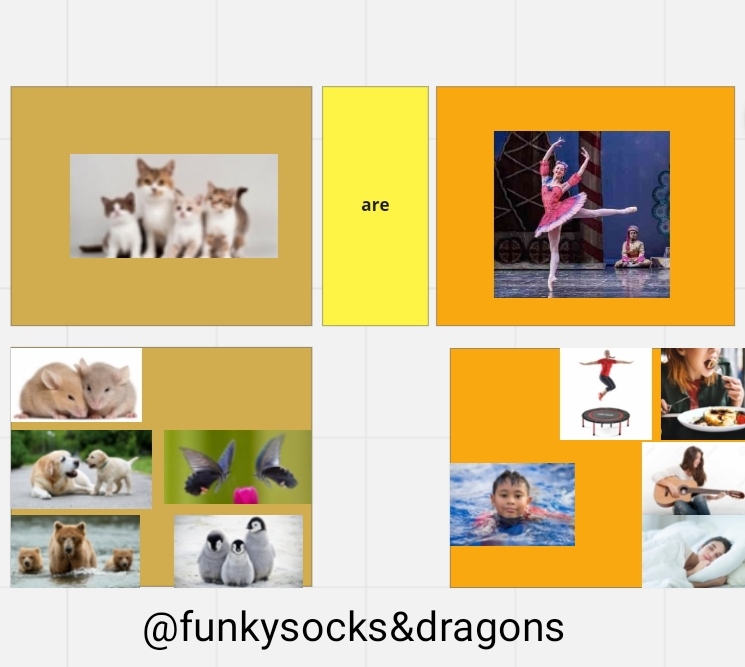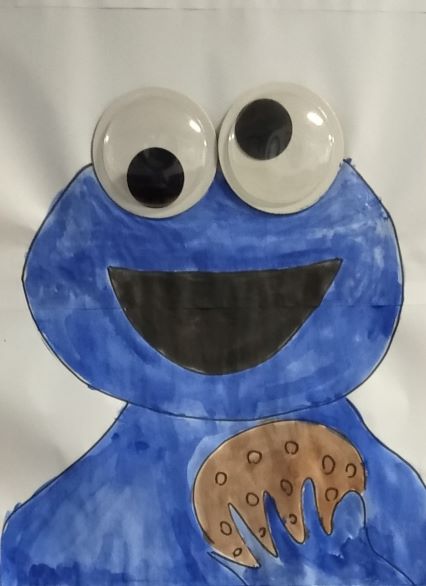
Here is my favourite character who would be a perfect amabassador for ‘We want more‘, my professional obsession (you might have noticed:-) and some of my favourite solutions for the classroom.
Trick number 1: The language
Regardless of what coursebook is used or what curriculum is followed, there are certain language items that can be included even in the pre-primary programme that will enable children to communicate and produce more language.
Some of these language items include:
- descriptive adjectives, such as big – small, long – short, happy – sad, beautiful – ugly, serious – funny, old – new, etc. Introducing them in opposites will make it easier for the students to understand and to remember
- simple linkers, introduced gradually, starting with ‘and’ (‘blue and green’, ‘cats and dogs’, ‘I like bananas and apples’), then moving on to ‘because’ ( starting with ‘I am happy because it is sunny’) and perhaps even ‘but’ (‘I like dancing but I don’t like dancing with a bear’, like in the song from Super Simple Songs).
- introduce Present Continuous, because it will be easy to play with it in all the miming games and it will come in very handy while describing pictures and telling stories.
- talking about other people. Personalisation is very important while learning language, not only with the little ones, but it is also a good idea to start introducing other people and the language we need to talk about them such as ‘she/he is / has got / can / likes’
Trick number 2: The freedom of speech
This freedom of speech has got very little with the civil rights. It is all about the degree of freedom that the students are given or, in other words, about the scaffolding and the support that are slowly removed in order not to limit the students and to enable them to choose what they want to talk about.
One way of doing it is shifting from closed yes/no questions towards more open-ended questions. ‘What do you like to eat?’ is more likely to generate more language that only ‘Do you like bananas?’ which will lead to one-word answers or maybe even only gestures. ‘Tell me about‘ will be a lot more generative.
Using this approach while working with illustrations, pictures or any kind of visuals will give students the opportunity to choose for themselves what to talk about. And it is quite likely that they will pick the topics (elements or aspects of the picture) that they are either more interested in, have more knowledge of or are better prepared to discuss. In any case, more language is likely to be generated.
Examples or real activities? Here you are:
Pairs is a speaking activity that uses a simple material of a set of pictures. The students put them in pairs, in any way they want. They also have to justify their choice. In case of the younger learners, this principle can be the colour (‘Panda and zebra. They are black and white’) but kids can also choose any other reason for that, like ‘Zebra and horse, they have 4 legs’ or ‘Bear and deer. They live in the forest’.
This activity can be also used with the older students who are given a list of words and have to put them in pairs, according the knowledge and the language they have.
Below you can see the end of the game with my pre-primary student. It started off slowly, with simple sentences about the colours that the animals have in common but as the activity progressed, the categories changed, too and we have here an example of animals that have a long tail (a lizard and a monkey), animals that live in the forest (a bear, a fox and a deer) or animals that like meat (a tiger and a lion).

Tell me about is another activity that uses a visual, for example a set of pictures with animals or a picture scene. Students choose an element for their peers to describe, for example Tell me about this boy’ and it is easy to imagine the variety of responses that these can generate. Students can choose to talk they boy’s clothes, feelings or actions.
Trick number 3: The appropriate activities and materials
Our students do what we want them to do. It is assumed so, precisely because we are teachers and they are students. The roles have been assigned once and for all. The question to ask yourself, though, is Would they really want to do it, if they had a choice? Is there anything in the task itself that would encourage them to? Or not.
Certainly, it does not meant that all those less-exciting-but-crucial activities will be renounced forever, because even though they are not always fun from the point of view of our students, they might still be necessary and useful, but it is an interesting aspect to start taking into consideration while lesson planning.
Here a few activities that use that principle
Yes or no? This is an activity that also uses visuals as the basis. In the first stages of the activity, the teacher describes the picture using very simple structure ‘I can see’ when some of the sentences are true and some are false. Students listen to the sentences and correct the sentences. In case of the pre-primary students, this is likely to be one-word production but with time, they are learning to respond in full sentences. Later on, when the students are familiar with the format of the activity, they are invited to take a leading role in the activity, also producing true or false sentences about the picture for the teacher and their peers to correct.
Kids love the game because they can correct the teacher’s mistake and they are allowed to create their own un-true sentences about the pictures and to try to trick the teacher. I have used it both with primary and pre-primary students. The younger kids, naturally, needed more time to adjust and to start producing full sentences, in the beginning they would only provide the key information, for example the colour or the number of objects but, eventually, they were comfortable enough with producing full sentences. At approximately the same time, they were ready to lead the game, too. The older, primary students could make this transition within a lesson.
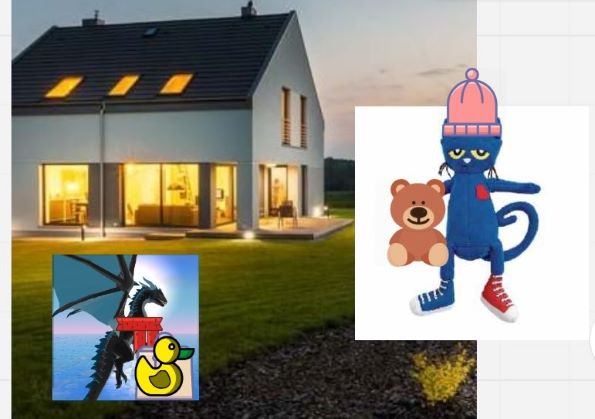
Storytelling for pre-primary is based on picture description. Here, the easily available materials might involve the stories from the coursebooks for pre-primary, retelling together any other story used in class or even any of the materials in the YLE Starters materials. In this case storytelling is scaled down to simple picture description, in the appropriate sequence.
Storytelling for primary can also use the visuals but it can be more challenging with the use of storydice or a storytelling treasure hunt (see here)
The lion and the kitten is a simple boardgame that has been very helpful in encouraging the students to produce the language. It was created and used with the online 1-1 pre-primary students. The game does not use a dice. Instead the students can choose the box where they want to go next and in each round, they have to talk about one of the pictures hidden under the yellow, orange and blue diamonds. In the beginning the sentences are very simple and focus on simple vocabulary (‘It’s mommy‘), later on these can be exchanged for a more detailed description (‘Mommy is happy‘ or ‘Mommy is dancing‘) and even further extended with the use of ‘because’ (‘Mommy is dancing because she is happy’) or in any other way that is within the children’s linguistic ability.
This game gives children a lot of freedom and almost a guaranteed victory. The cards can be changed easily, especially in the online format, and even if not, new sentences can be made every time the game is played. With a group of children, a dice would probably have to be used.
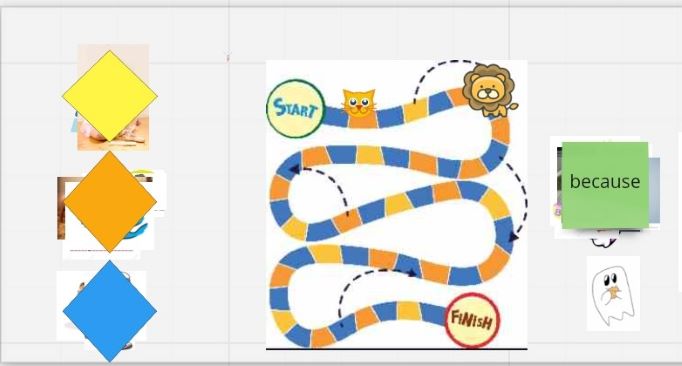
Are you in the park? is a simple guessing game turned into a role-play. Each student has a city plan (since this was the language that we were working at the time) and three stickers which they glue somewhere ‘in the city’. They keep their picture secret and they try to guess where their partner is at the time.
Student A: Are you at the bank / park / market?
Student B: Yes, I am / No, I am not.
After a while, they can ask for help.
Student A: Please help me.
Student B: I can see…I can hear…I can smell….
Student A: You are…
Initially, the stickers were introduce only to prevent the kids from ‘cheating’ but they absolutely loved having random leftover stickers all over the place. In the first lesson we play, it was pirates, in the second one, it was farm. They laughed a lot about having little pigs and chicks all over their cities. The other incentive was the opportunity to imagine and to describe the places from the angle of what they saw, heard and smelled in different places in the city. The kids had the full control over the game and they were making the decision themselves when to move to the second stage.
For some more tricks, please see my other posts: the discourse clock, pairwork for preschoolers or using ambiguity to get the students to talk.
Happy teaching!
